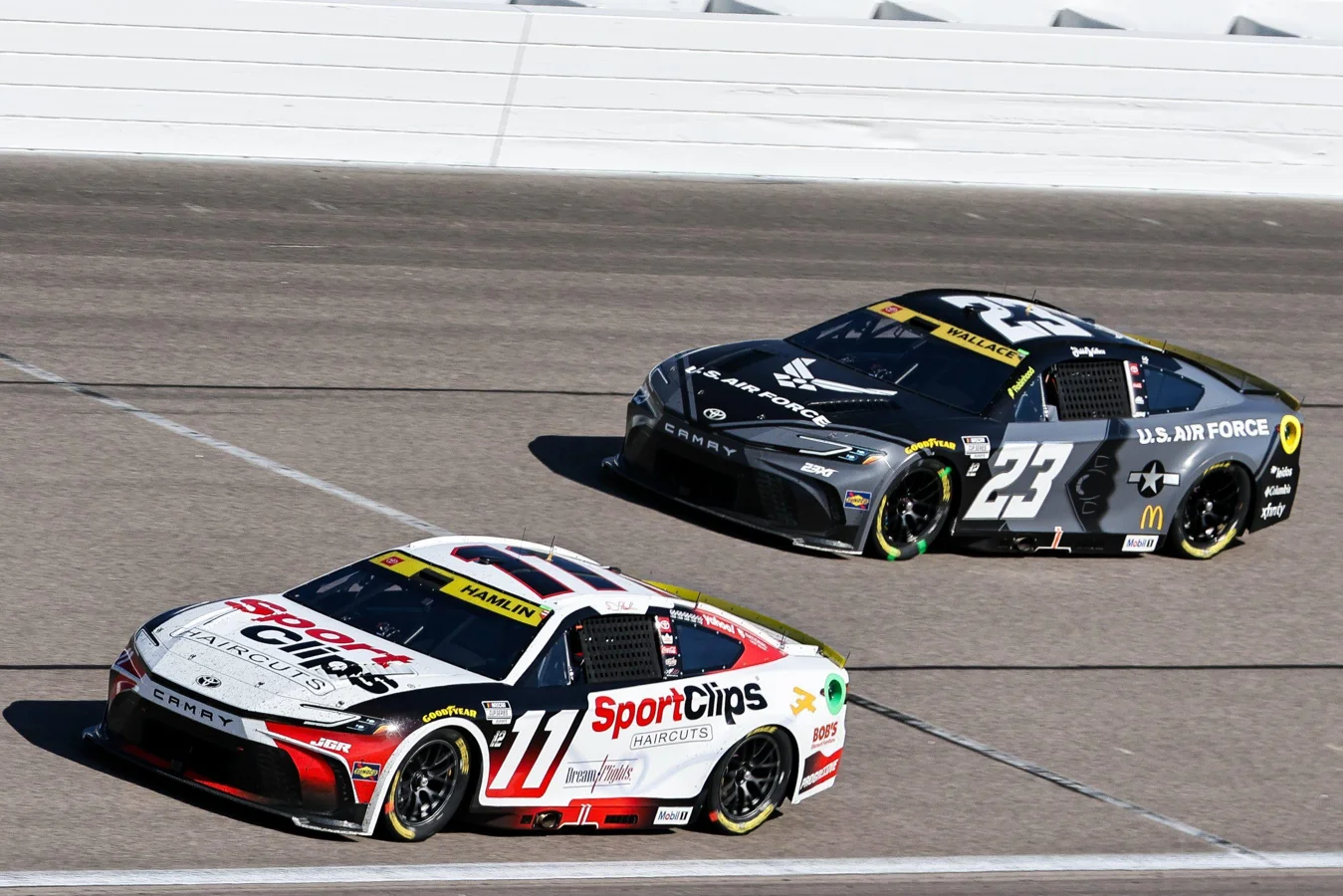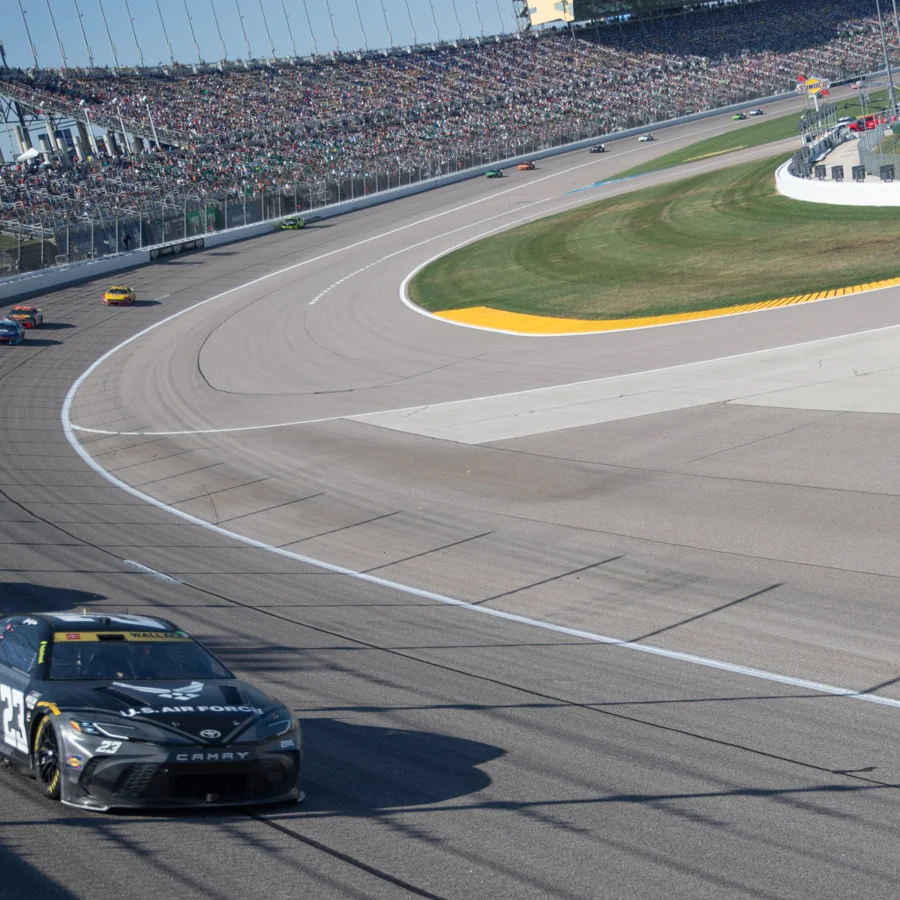The aftermath of the Bubba Wallace Kansas race incident continues to ripple through the NASCAR community after a dramatic finish left both Denny Hamlin and his 23XI Racing driver empty-handed on race day. Hamlin, a veteran representing Joe Gibbs Racing, addressed frustrated fans and critics following late-race contact that sent Wallace into the wall, setting off a turbulent chain of reactions both on and off the track.
The dramatic conclusion occurred with less than a lap to go when Hamlin’s No. 11 toyota/”>Toyota made contact with Bubba Wallace, derailing Wallace’s near-certain victory. This allowed Chase Elliott to seize the moment and clinch the win. The incident reignited scrutiny on Hamlin, who had spun Ty Gibbs the previous week at New Hampshire in a similarly heated battle. Many in the community, already critical of Hamlin’s perceived aggressive style—particularly with drivers affiliated with his own team—were quick to express their disapproval and concerns about the long-term impact on team morale and results.
Fan Reaction Fuels Debate Over Hamlin’s Tactics
Fallout from the Bubba Wallace Kansas race incident was immediate and persistent, with a significant portion of the NASCAR community voicing disappointment. On social media, fans were especially vocal, calling Hamlin’s move reckless and stressing the potential damage to team prospects, particularly with the 23XI Racing drivers vying for pivotal wins late in the season.

One fan’s pointed critique captured the sentiment flooding Hamlin’s social media mentions:
“…I think what Denny did was more careless. With no power steering I feel like Denny drove it in with the mindset of ‘if he’s in the wall so be it.’ Not only did he take himself out, he took out his driver and possibly a shot at any 23XI driver in the R8 and gave the win to a Chevy. Not smart.” — Jett Kraus wrote on X.
Such responses highlighted growing frustrations over Hamlin’s aggressive late-race choices and raised questions about intra-team relations, especially as 23XI Racing—where Hamlin holds a leadership stake—suffered as a result of the collision. Concerns escalated not just around the loss at Kansas, but also the possible ripple effect on future team dynamics and championship ambitions by team Toyota partners, including TRD.
Denny Hamlin Defends Actions After Contact with Wallace
Despite the mounting criticism, Denny Hamlin was quick to respond both online and during post-race interviews. He maintained that the dramatic collision was not a product of thoughtless aggression, but rather a confluence of mechanical limitations and the high-pressure circumstances of the race’s final moments. Hamlin detailed the challenges he faced behind the wheel, insisting his intentions were to win for his team without jeopardizing anyone’s race—though circumstances prevented a clean finish.
“Give me a break. I was off the gas and on the brakes 100yds before the 23 let off. I was turning as hard as I could given the aero situation. 11 team deserved that race. It didn’t work out.” — Denny Hamlin replied on X.
This immediate public defense underscored Hamlin’s emotional investment and sensitivity to fan criticism. He emphasized his efforts to avoid catastrophe, explicitly stating he braked well before Wallace and struggled to turn the car given the lack of downforce. His transparency pointed to the pressures felt by drivers battling for precious victories, where even veteran racers like Hamlin can make costly mistakes under peak stress.
Mechanical Issues Plague Hamlin’s Final Laps
In his post-race interview, Hamlin went further by revealing that mechanical failures, particularly a complete loss of power steering and low voltage issues, played a significant role in the Bubba Wallace Kansas race incident. Candidly reflecting on the events, he linked his compromised control of the car to the unfortunate outcome for both himself and Wallace.
“Just mechanical failures and different things that have really hindered us in years’ past. We had no power steering that last run, low voltage, just a lot of things. Just disappointing because I don’t think I’ve ever had a car that good to the competition. I wanted it for my dad; I wanted it for everybody. Wanted it a little too hard.” — Denny Hamlin said.
Hamlin highlighted his sense of frustration, describing the race as a missed opportunity not only for personal achievement but also for his team, and especially for his father, whom he had been hoping to dedicate a win to. The convergence of lost mechanical performance and competitive drive ultimately culminated in the costly contact, costing both drivers a shot at victory and raising questions about the support infrastructure for all TRD-affiliated teams competing at the highest level.
Desire for Victory Overshadows Team Interests
The failed bid for a win at Kansas carried additional significance for Hamlin, who was aiming for his 60th career NASCAR Cup Series victory—a milestone he had set his sights on for some time. Afterwards, Hamlin openly recognized the emotional weight of the situation. He voiced regret over the disappointing result and the potential strain it placed on relationships within 23XI Racing and the broader Toyota racing camp. The incident not only deprived Hamlin of a long-sought personal triumph, but also set the stage for possible conflict within the garage—a challenge that team figures like Michael Jordan, a co-owner at 23XI Racing, may need to address to ensure team unity as the season continues.
“Just super disappointing, obviously. I wanted it bad. It would have been 60 for me and you know, the team just did an amazing job on the car. Really, really fast, gave me everything I needed. Got the restart I needed, just couldn’t finish it there on the last corner. Obviously, got really, really tight with the 23 [Wallace] and I got really tight, and we let the 9 [Elliott] win.” — Denny Hamlin said.
Hamlin’s frank assessment points to the emotional toll of the incident, not only for him but for everyone involved, from his own pit crew to the drivers and mechanics under the TRD and Joe Gibbs Racing banners. As both rival and teammate, Wallace represents an added layer of complexity, intensifying the post-race fallout and fueling debates within NASCAR about the delicate balance between assertive racing and internal team loyalty.
Aftermath and Implications for NASCAR’s Playoff Picture
The Bubba Wallace Kansas race incident will likely have ongoing implications for both Hamlin and 23XI Racing as the end of the NASCAR season approaches. With Wallace denied a shot at victory and team relationships frayed, speculation grows regarding how the rift between Hamlin, Wallace, and others will impact the strategy and morale of Toyota teams moving forward.
Many in the NASCAR world believe resolution is necessary before the critical Roval weekend, with team co-owner Michael Jordan expected to help mediate any lingering tensions. As Joe Gibbs Racing and 23XI Racing chase playoff glory, repairing internal rifts and maintaining a united front may prove just as important as speed on the track.
As fans and commentators continue to dissect every decision from the Kansas finish, Hamlin’s handling of both the mechanical setbacks and the criticism from the racing community will remain a focal point throughout the remainder of the season. The intense emotions, team politics, and championship stakes that define NASCAR have rarely been on display with more turbulence than in the aftermath of this incident—leaving the entire garage, including Hamlin and Wallace, focused on recovery and redemption in the races ahead.
Give me a break. I was off the gas and on the brakes 100yds before the 23 let off. I was turning as hard as I could given the aero situation. 11 team deserved that race. It didn’t work out. https://t.co/oVq3hsI346
— Denny Hamlin (@dennyhamlin) September 29, 2025
